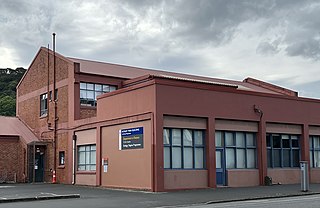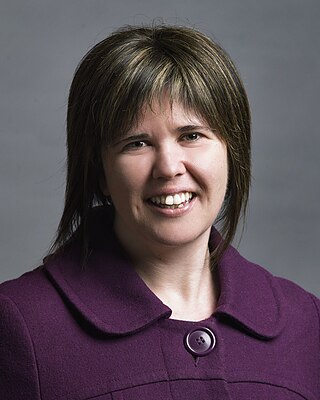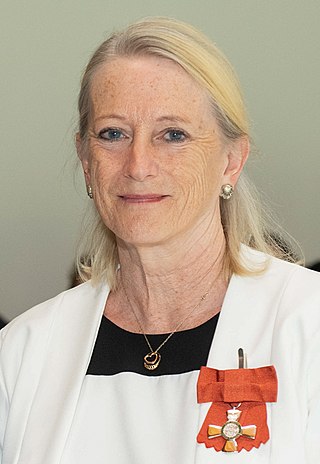Related Research Articles

Lucy May Cranwell was a New Zealand botanist responsible for groundbreaking work in palynology. Cranwell was appointed curator of botany at Auckland Museum in 1929, when she was 21 years old. As well as her work on ancient pollen samples she was responsible for encouraging a love of botany in a generation of Auckland children.
Ruth Mason was a New Zealand botanist specialising in the taxonomy and ecology of freshwater plants. She was employed at the Department of Scientific and Industrial Research for 35 years undertaking research into aquatic plants, pioneering new techniques for plant preservation and collecting over 13,000 plant specimens in the field. She was awarded life membership by the New Zealand Ecological Society.

Elsie Low, was a New Zealand botanist, teacher and temperance campaigner.

Audrey Lily Eagle was a New Zealand botanical illustrator, whose work mainly focused on New Zealand's distinctive trees and shrubs. As the author and illustrator of the two volume Eagle's Complete Trees and Shrubs of New Zealand, Eagle made a notable contribution to New Zealand botany.

Dame Ella Orr Campbell was a New Zealand botanist. An expert on bryophytes, she published 130 scientific papers on liverworts, hornworts, orchids, and wetlands. She became the first woman faculty member of the Massey Agricultural College in 1945, and in 2003 the herbarium at Massey was renamed the Dame Ella Campbell Herbarium in her honour. Following her retirement from teaching in 1976, she continued to research and publish for another two decades, finally retiring in 2000 at the age of 90.
Helen Kirkland Dalrymple was a New Zealand botanist, author and school teacher who wrote two books on Otago flora.
Josephine Gordon Rich later Haswell (1866–1940) was a New Zealand zoologist and one of only four New Zealand women who published results of her scientific work before 1901.

Elizabeth Edgar was a New Zealand botanist, best known for her work in authoring and editing three of the five volumes of the series Flora of New Zealand, which describes and classifies the species of flora of the country. She was most noted for her taxonomic work on the biodiversity of New Zealand and was recognised as the foremost authority on nomenclature and description of the country's plants.
Mary Winifred Aitken was a New Zealand botanist. She was the first female lecturer at the University of Otago.
Janice Marjorie Lord is a New Zealand academic, a plant evolutionary biologist, and as of 2020 is an associate professor at the University of Otago, where she is the curator of the Otago Regional Herbarium.

The Otago Regional Herbarium is a herbarium based at the University of Otago, in Dunedin, in the South Island of New Zealand. It has the herbarium code OTA. It has 72,000 items, making it the second largest herbarium in the South Island.
Marion Frances Robinson was a New Zealand nutritionist and physiologist. She was professor of nutrition at the University of Otago, and is particularly noted for her investigation of the importance of selenium in the human diet.

Beryl Iris Brewin was a New Zealand marine zoologist, specialising in ascidians.

Marion Liddell Fyfe was a New Zealand academic, specialising in taxonomy of planarians and other flatworms, the first woman zoology lecturer at the University of Otago, and the first woman to be elected to the Council of the Royal Society Te Apārangi.
Flora Buchan Murray was a New Zealand botanist, and was the second woman appointed as permanent staff at Canterbury University College.
Agnes Randall Blackie was New Zealand's first female physics lecturer and probably the Southern Hemisphere's only female physics academic at the time of her appointment.
Brenda Faulkner Shore was a New Zealand botanist who attained the rank of Associate Professor before she retired in 1983.
Anne Briar Smith was a New Zealand professor at the University of Otago, and was a pioneering children's rights researcher.

Angela Cheryl Wanhalla is a professor of history at the University of Otago in New Zealand. Her book about interracial marriage in New Zealand won the 2014 Ernest Scott Prize. Wanhalla was elected as a Fellow of the Royal Society Te Apārangi in 2022.

SallyAnn Harbison is a New Zealand forensic scientist. She leads the forensic biology team at the Institute of Environmental Science and Research, and is an associate professor at the University of Auckland. Harbison was appointed a Member of the New Zealand Order of Merit in 2021 and in the same year was elected as a Fellow of the Royal Society Te Apārangi.
References
- 1 2 3 4 "Ann Wylie". Royal Society Te Apārangi. Archived from the original on 22 January 2021. Retrieved 1 January 2021.
- 1 2 Mark, Alan (13 April 2022). "Celebrating distinguished botanist Ann Wylie's centenary". Inside Government NZ. Retrieved 1 May 2022.
- 1 2 3 4 5 "Current notes". The Press. Vol. 83, no. 25257. 8 August 1947. p. 2. Retrieved 19 October 2021.
- ↑ "Obituary: D. S. Wylie" (PDF). British Medical Journal: 1007. 23 October 1965. Retrieved 19 October 2021.
- ↑ Trump, Eric (13 April 2022). "Research flowered under fine botanist". Otago Daily Times Online News. Retrieved 12 April 2022.
- ↑ "Current notes". The Press. Vol. 83, no. 25173. 2 May 1947. p. 2. Retrieved 19 October 2021.
- ↑ Baylis, Geoff. "John Ernest Holloway". Dictionary of New Zealand Biography . Ministry for Culture and Heritage . Retrieved 2 January 2021.
- ↑ Lewis, John (31 January 2011). "College ex-residents compare times". Otago Daily Times Online News. Archived from the original on 26 January 2021. Retrieved 1 January 2021.
- ↑ Clarke, Ali (5 October 2013). "Some fine fellows". University of Otago 1869–2019. Archived from the original on 12 February 2016. Retrieved 1 January 2021.
- ↑ Alison Clarke (2018), Otago: 150 years of New Zealand's first university, Wikidata Q63406621
- ↑ Clarke, Ali (27 March 2016). "Scientific women". University of Otago 1869–2019. Archived from the original on 2 February 2018. Retrieved 1 January 2021.